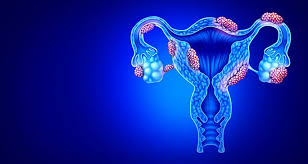Uterine fibroids are one of the most common non-cancerous growths found in women of reproductive age. While many women with fibroids experience no symptoms, for others, these benign tumors can cause significant discomfort and affect quality of life. Understanding what fibroids are, their symptoms, causes, and treatment options can help women take control of their reproductive health and seek timely care.
What Are Uterine Fibroids?
Uterine fibroids, also called leiomyomas or myomas, are non-cancerous growths of the uterus. They can vary in size from as small as a seed to as large as a melon and may appear in single or multiple formations.
Types of Fibroids (Based on Location):
- Intramural fibroids: Found within the muscular wall of the uterus.
- Subserosal fibroids: Located on the outer surface of the uterus.
- Submucosal fibroids: Grow into the inner cavity and often cause heavy bleeding.
- Pedunculated fibroids: Attached to the uterus by a stalk-like structure.
The size, number, and location of fibroids influence the severity of symptoms and the choice of treatment.
Common Symptoms of Uterine Fibroids
Not all women experience symptoms, but when they do, the following may be observed:
- Heavy or prolonged menstrual bleeding
- Pelvic pain or pressure
- Frequent urination
- Difficulty emptying the bladder
- Constipation
- Backache or leg pains
- Pain during intercourse
- Abdominal swelling or bloating
- Fertility issues or miscarriage
The symptoms often worsen as fibroids grow larger, particularly in women in their 30s and 40s.
What Causes Uterine Fibroids?
The exact cause is not fully understood, but several factors contribute to their development:
Hormonal Factors:
- Estrogen and progesterone appear to promote fibroid growth.
- Fibroids typically grow during the reproductive years and shrink after menopause.
Genetic Factors:
- Family history plays a role. Women with a close relative who had fibroids are more likely to develop them.
Other Contributing Factors:
- Obesity
- Early onset of menstruation
- Vitamin D deficiency
- Diet high in red meat and low in green vegetables
- High blood pressure
Diagnosis of Uterine Fibroids
If fibroids are suspected, your doctor may recommend:
- Pelvic examination: To feel for abnormalities in the shape of the uterus.
- Ultrasound: To confirm the presence, size, and location of fibroids.
- MRI: For detailed imaging when planning treatment.
- Hysterosonography: Saline-infusion ultrasound for better view of submucosal fibroids.
- Hysteroscopy: Allows direct visualization of the uterine cavity using a thin, lighted tube.
Treatment Options for Uterine Fibroids
Treatment depends on the size, number, location of fibroids, and the severity of symptoms, as well as whether the woman wants to maintain fertility.
1. Watchful Waiting
- For women with no or mild symptoms, monitoring the fibroids through regular checkups may be sufficient.
2. Medications
- Hormonal therapy: Birth control pills, progestins, and GnRH agonists to reduce bleeding and shrink fibroids.
- Non-hormonal medications: NSAIDs for pain relief, and tranexamic acid to reduce menstrual bleeding.
3. Minimally Invasive Procedures
- Uterine artery embolization (UAE): Cuts off blood supply to fibroids, causing them to shrink.
- MRI-guided focused ultrasound surgery (FUS): Destroys fibroid tissue using high-frequency sound waves.
4. Surgical Treatments
- Myomectomy: Surgical removal of fibroids, preserving the uterus. Ideal for women wanting to conceive.
- Hysterectomy: Complete removal of the uterus. Recommended for women with severe symptoms who don’t plan future pregnancies.
Each treatment option has benefits and potential risks, so it’s essential to have a detailed discussion with your doctor.
Impact of Fibroids on Fertility
Not all fibroids affect fertility, but certain types—especially submucosal fibroids—can interfere with embryo implantation or lead to miscarriage. Myomectomy is often recommended for women trying to conceive who have fibroids causing reproductive issues.
Can Fibroids Become Cancerous?
Uterine fibroids are almost always benign. The risk of a cancerous fibroid, known as leiomyosarcoma, is extremely rare and not linked to fibroid growth rate or size.
Conclusion
Uterine fibroids are a common health condition that many women will experience at some point. While they are typically non-cancerous, fibroids can still cause significant discomfort and complications if left unmanaged. With multiple treatment options available—ranging from medications to advanced surgical procedures—women can find relief tailored to their health goals and lifestyle. Early diagnosis and open communication with a healthcare provider are key to managing fibroids effectively.
FAQs
1. Can fibroids go away on their own?
Fibroids may shrink after menopause when hormone levels decrease, but they usually do not disappear completely without treatment.
2. Do fibroids always cause symptoms?
No, many women with fibroids experience no symptoms and may only discover them during a routine pelvic exam.
3. Is pregnancy possible with fibroids?
Yes, many women with fibroids have healthy pregnancies, though some may face challenges depending on fibroid size and location.
4. What lifestyle changes can help with fibroids?
Maintaining a healthy weight, exercising regularly, reducing red meat intake, and increasing green vegetables and vitamin D may help manage fibroid growth.
5. Is surgery the only option for treating fibroids?
No, there are several non-surgical and minimally invasive options available. The best treatment depends on your symptoms and future fertility plans.
